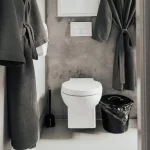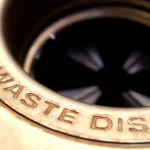Water leaks are an expensive plumbing problem to have. If your utility bill is suddenly sky-high, while the composition of your household remains the same and you haven’t recently filled a swimming pool or anything, you may have a leaking toilet and need plumbing repairs. Toronto homeowners typically know that unlike water pipes, toilet leaks are a lot harder to discover. Because the water is essentially leaking into a water receptacle, there’s no telltale puddle, damp patch or growing mildew to alert you. A leaky toilet can waste up to 22,000 gallons of water a day, so it’s not something you can ignore.
3 Ways to Check for Leaks
Here are some methods you can use to find out if you have a leak. Some are more efficient than others, but if two or more of these tests yield positive results, you can assume that something is wrong.
- Check the water meter. If you live in a single-family home that has its own water meter, it’s fairly easy to identify whether water is running. Turn off every water source in the house and alert your family to what you are trying to do. Ask everyone to avoid using water for 30 minutes without telling you. If you have more than one washroom, turn off the water supply to all but one toilet at a time. Take a reading from the water meter and write it down. Take a new reading every ten minutes and after you have three readings, compare them to see whether you are using water and if so, how much. Repeat this for each toilet that you want to test.
- Do the dye test. No, it’s not an “old wives tale,” the dye test is a legitimate test recommended by even the best plumbers in Toronto. Leaking toilet tanks are one of the top 5 residential toilet problems homeowners experience, so there are lots of ideas on how to detect them. Use a spoonful of food coloring or purchase Leak Detection Tablets from your nearest hardware store, which is made specifically for the purpose. Add the colorant to the toilet tank without flushing the toilet and leave it for half an hour. Check the bowl to see if there are traces of the color in the water. If so, it means that water is leaking from the tank into the toilet without flushing, from where it passes into the drains unless your toilet hardware is damaged.
- Perform the paper towel test. Dry the exterior surface of the toilet thoroughly. Add the dye to the tank as you do for the dye test, but also add color to the toilet bowl itself. After an hour or more (these leaks may be slower) run a paper towel around the outside of the toilet bowl and base and check the paper towel for any traces of color. This will identify whether water is leaking through a crack in the bowl or base, a leaking valve or gasket.
Often, these leaks don’t require extensive plumbing repairs. Toronto homeowners may be able to fix a leaking toilet tank by making a small adjustment to the float arm or replacing the ball valve. Of course, if your tank is built into the wall it makes it a little more complicated and you will likely need the leak detection services of a professional plumber to deal with it.






